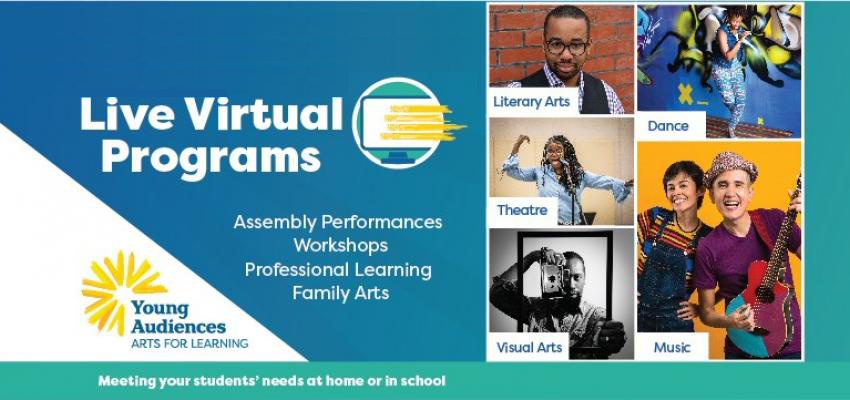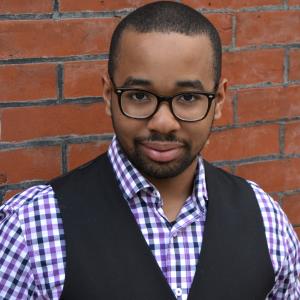I am a multidisciplinary, multi-hyphenated artist who straddles the worlds of teaching artist and arts administrator; theater maker, poet, and musician. Most folx would say I have a bold imagination and vision; I’m a proactive problem solver who strives to cultivate welcoming learning communities that celebrate the everyday and everyone’s authentic voices. So when given the task to create pilot virtual programming while continuing to teach, I knew it would require a dramatic reimagining, as I was in the midst of my own personal transformation.
Let me take you back to mid-February.
2 am / 9 days in recovery / left vocal cord / paralyzed.
Can’t walk on my own / let alone move my toes.
Thoughts of / how do I teach poetry when I can’t physically speak? / teach when I’m not able bodied ? / crescendoed to the beeping of the oxygen machine / the condensation settling on my beard the way / my voice / changes when I’m teaching different grade levels / can’t imagine a world of virtual programming / when the body may not allow me / to teach how I’ve always taught ….. /
Since I can remember, I have always been stuck in the middle of multigenerational arts education debates about process, responsiveness, and intellectual culture. The old school teaching artists typically say, “I can’t teach my art form unless I’m in a room with my students. They have to breathe, taste, and see the art and art form. I have the right to control the distribution of my artwork because it’s mine,” while the new school teaching artists boldly declare, “We are in the technology age: Your artwork and process isn’t precious. We have to remix and reinvent how we participate in our art form. Your practices are upholding white supremacy culture and aren't being culturally responsive.”
Both schools are right. My students are from predominantly urban environments and don’t have access to the arts. Historically, predominantly white institutions in the arts and culture sector have not always valued bringing authentic community experiences reflective of their student population's needs and viewpoints. What would happen if students attended a stripped-down performance in their classroom? Or we streamed the show straight to the school as an assembly with a pre and post workshop? My ever-changing definition of equity pushed me to think broadly about how to approach teaching spoken word and theater.
Much of my thought process around virtual teaching focused on what skills can be transferred into a virtual platform. Creating a tableau can become difficult in a virtual setting with the students not being able to see where everyone is on the screen or building a cypher where students shout out lines in a rhythm can be difficult based on their internet connection. My struggle creating a virtual program centered around how to incorporate the five senses into my planning for each lesson and how to incorporate the everyday into my teaching: phone calls, poor connection, the bedroom, rain, students eating lunch, and a turtle or two.
With Young Audiences, we spent time discussing how to create a space for my multiple identities to feel safe in a white space following the death of George Floyd. The conversations centered on the social emotional needs of everyone, including myself. It meant making adjustments to the time for a slower day one and daily check-ins. After much discussion, the purpose of the residency morphed to reflect the following question: how can this “break” from traditional learning help the teachers and students at home cope with change?
A / Break
Another black man was shot and killed today / hashtag I don’t feel like teaching / Cross bearing / stomping in the streets / cross bearing / voices singing / its red painted on black streets / & the kids are worried about going outside to play / quarantine blues harmonizing with capitalism / the blank canvas outlining shadows of connection / the memories of time spent elsewhere / how do we feel today? / gotta get back to my childhood days of creating / in the basement with just myself n an imaginary audience of one / feeling / responding / discussing / questioning why in the moment / virtual teaching is not a spectators sport / get those chats popping in the space / those teachers creating & sharing / community learning is reflecting / feeling / embracing / allowing context to create content
Re/suming
Teaching in a virtual format has actually been a gift and a preference of mine. It has caused me to shift my perspective on what a teaching artist is and how I approach teaching. The role of the teaching artist during this time is to become a cultural anthropologist: surveying our relationship to home, identity, and everyday ritual while reimagining our artmaking possibilities: radio drama, Instagram choreography sessions, watch-me-work sessions, choreopoems, visual albums. In your lesson plans, ask yourself:
1. Do I create space for checking in to promote self awareness?
2. Where are we moving, listening, seeing, hearing, writing, drawing to adjust how we self-manage?
3. What’s a question I have today that we can explore together to deepen our commitment to social awareness?
4. How can students incorporate home objects and ritual into their artmaking?
5. How can my art form strengthen relationship skills; be both adventurous and help both teachers and students cope with trauma and change?
As schools shift into the virtual age and tie more of their work into social emotional learning, the new challenge will be: how can we be a vessel for peace of mind, and champion of the everyday?
Learn more about Josh Campbell and his live virtual programs at Young Audiences Arts For Learning NJ & Eastern PA.









